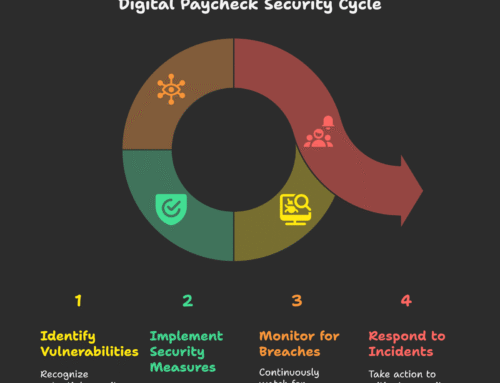Bringing great talent onboard in your organization doesn’t come cheap. Between headhunters, fancy job boards, advertising costs, and endless rounds of interviews, recruitment expenses can quickly eat into your budget.
With the average cost per hire in the US hovering around $4,700, it’s only prudent that you find ways to streamline your hiring process and cut expenses. Thankfully, there are several clever tactics you can use to do this without sacrificing the quality of hires you make.
In this post, we explore five strategic ways to reduce recruitment costs in your company. We’ll discuss vital strategies like internal referrals, social media hiring, employee retention, and so on.
Ready? Let’s dive in!
Image by Drazen Zigic on Freepik
1. Utilize internal referrals
Your employees are your best brand ambassadors, so why not leverage their networks? Internal referrals not only save you money on external advertising but also increase the chances of finding candidates who are a good cultural fit.
To make your employee referral program more effective, you need to ensure that your employees understand how it works. Provide clear guidelines on how they can refer someone. Specify the qualifications needed for the referred candidates and the steps that follow a referral— for instance, who to send the referred candidates to.
Also, encourage your employees with rewards for recommending qualified candidates. These can range from monetary bonuses to extra vacation days, employee recognitions, or shoutouts. Be sure to keep the referral program top of mind by regularly communicating about it through company meetings, emails, or internal newsletters— especially when there’s a new opening.
Finally, prioritize feedback by letting employees know the status of their referrals. If a referred candidate isn’t selected, offer an explanation. Did the candidate not meet specific criteria? You should let your employees know. Don’t keep them in the dark. This way, they are encouraged to participate in future referral programs and know what to look out for.
2. Leverage social media platforms
Ditch the expensive job boards and take advantage of social media platforms like LinkedIn, X, and even Facebook groups. A report by CareerArc reveals that 86% of job seekers use social media to look for relevant jobs and apply for them.
Since the aim is to target the right groups for your specific needs, it’s important that you choose the right social platforms. You don’t have to be everywhere. For instance, LinkedIn might be the best choice if you wish to hire for professional roles. Instagram is ideal if you’re looking for more creative roles like Graphic design or photography. X (formerly Twitter), if you want more technical experts. And, TikTok, if you’re looking for a younger workforce.
Now, using social platforms is not merely about posting job vacancies and hoping that the right candidate finds you. Instead, you want to be intentional about presenting your company as a brand that people would want to work with.
Use your social profiles to showcase your company culture. Put out content that echoes your company values and shows off your work environment. You can also get willing employees to talk about the positive experiences they’ve had by working with you. This is not only an effective way to get likes and other types of engagement, but it can also help you attract potential candidates.
Additionally, you should use high-quality pictures and videos to create an appealing social media profile. Keep your online community engaged by responding to comments or direct messages— especially when they ask questions about the vacancies you share. By doing all of that, you’re making a warm and welcoming impression on potential candidates.
Encourage your employees to share the job posts you distribute. This can extend the reach to individuals within their networks, proving effective as personal connections significantly influence job opportunities.
3. Implement employee retention strategies
When your employees love their jobs, they’re more likely to stay. This reduces the need for you to run constant hiring sprees— so you get to save costs in the long run. Investing in employee retention strategies can also enrich your internal talent pool for future openings. You can easily promote current employees for higher roles and recruit for low-level positions. This helps you ensure that you have trusted people in more sensitive areas.
So how can you create a work environment that encourages employees to stay? Prioritize employee satisfaction and well-being.
First off, ensure that your employees are paid fairly for their work. A report by the Pew Research Center pointed out low pay as one major reason why 63 percent of employees quit their jobs. Other reasons for quitting include the absence of advancement opportunities and flexibility.
Ideally, you should do a regular review and adjust salaries to match the current industry standards and living costs. Also, offers opportunities for employee development by running mentorship or training programs.
Additionally, you can permit flexible work arrangements to allow for employees’ diverse needs and create a proper work-life balance. Consider providing remote work options, flexible hours, or even reduced work days, especially if your employees have proven to be effective over time.
It’s also important to acknowledge the efforts that your employees make and reward them with the right recognition program. Overall, you want to create an environment where employees feel valued and needed.
4. Invest in ATS software
Applicant Tracking Systems (ATS) software helps to streamline the application process. ATS tools like BambooHR, Workable, or Zoho are designed to filter resumes based on specific criteria and automate communication with candidates. They save you precious time and resources, allowing you to focus on the best-fit candidates.
When selecting an ATS software, you should properly assess your needs and the volume of hiring you’ll be doing in the long run. Choose a platform that can accommodate your growth. Look out for key features like ease of use, reporting capabilities, and customer support. Also, consider feedback from other users on popular review platforms like Capterra.
Now, here’s how you can effectively use ATS for your recruitment process:
- Use ATS to customize your hiring process. Personalize processes like screening, interviewing, candidate assessments, and onboarding.
- Automate routine tasks like screening applications, scheduling interviews, and onboarding new hires.
- Set up the ATS to automatically post your job listings. These listings can be posted on your careers website or your social platforms once the integration is done properly. Be sure to optimize these job postings by using the relevant keywords and job descriptions.
To make things easier you can use a generative AI platform like Writer to craft a well-detailed job description. All you need is to provide a clear prompt about the role you want to hire for and the AI tool will generate a draft that you can edit and upload to your ATS software.
Finally, you can track the effectiveness of your recruitment process by looking out for details like time-to-hire, cost per hire, candidate quality, and so on. Then, you’ll have some key insights for improving your strategy where necessary.
5. Enhance your company’s career portal
Your company’s career page is your virtual frontline for attracting new talent. Make sure it properly reflects your employer’s brand. Here are some ways to ensure that this career portal stands out.
Highlight your company culture, vision, and mission. This is how potential employees can get to know you. You can also include positive testimonials from current and even previous employees. That’s a form for social proof that’ll help prospects know what it’s like to work with you.
Also, be sure to keep your job listings clear and straightforward. Add enough details and let prospects know exactly what you’re looking out for. For example, qualifications, candidate experience level, or special skillsets that you need.
You can also answer some frequently asked questions that prospective employees may have. It’s a good idea to tell candidates how your typical recruiting process works, so they know what to expect. Ensure that it’s easy to apply for jobs through your career portal. If candidates have to upload files, this should be seamless.
Finally, use a clear call to action that prompts candidates to apply for roles that they’re interested in. Beautify your page with quality designs. You can add images of your workspaces or other types of photos that complement your written content. Make sure the page is easy to navigate and responsive— so that it’s accessible on mobile devices too.
In Closing
Employee recruiting costs can spiral quickly and eat into the total budget for running your company. That’s why it’s important to seek out ways to reduce recruitment costs without compromising on the quality of your new hires.
Today, we went over five effective strategies for reducing hiring costs. They include: using internal referrals, leveraging social media, adopting employee retention strategies, using ATS software, and enhancing your company’s career portal.
These techniques will not only reduce recruitment costs but also enhance the overall efficiency of your hiring process. So go ahead and put them to use. Good luck!






Leave A Comment